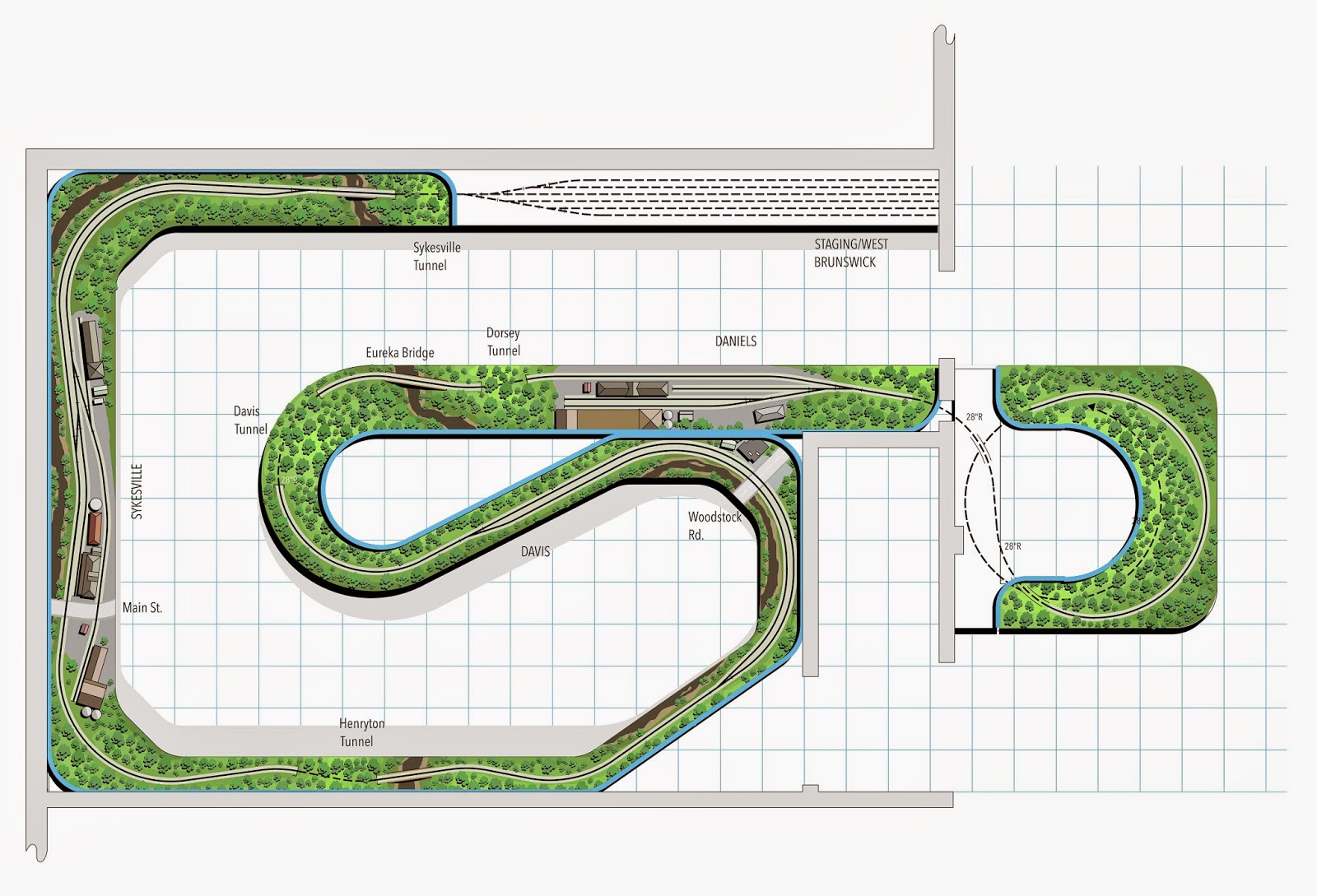I have approached all of my layout design and construction with this in mind, and the lower level backdrop was no exception. My plan called for (3) 4' x 8' sheets of .040 styrene to be cut into (12) 12" x 96" lengths which would be enough for the entire run. I wanted a system that would be stable, adaptable and attractive... pretty much those same three elements that the V man would have mandated had he been playing with trains instead of building aqueducts.
 |
Plastic end caps were screwed into place along the entire run of the lower deck to accept the styrene backdrop in the same fashion as was done at the former doorway and peninsula.
|
 |
The end caps were jointed to correspond with that of the bench work to maintain the sectional feature of the entire construction... again, just in case.
|
 |
Styrene sections were butted together and reinforced with a 3" wide backer that was stapled in place. A Velcro square is visible at the top.
|
 |
Despite the channel, Velcro and styrene backing, the butted ends of the styrene did not sit uniformly, leaving a very visible seam in some locations.
|
 |
The carpet tape did the trick nicely and the seams were barely noticeable at this point. The installed sheets of styrene were now ready to be carefully primed and painted, in place, with a 3" roller.
|
 |
The installation of the backdrop more clearly illustrates the varying depths of each deck around the full run of the layout.
|
 |
Although in different planes, the lower backdrop blends effortlessly with that of the upper which is mostly the room's sheet rocked walls.
|
 |
Two decks, check. Two backdrops, check. And all the bells and whistles still to come!
|
The lower level backdrop really went together nicely and without any surprises. The seams became all but invisible once they were primed and painted over, yet the entire backdrop is relatively free-floating. I call it 'temporarily permanent.'
The Romans may have invented concrete, but I'll stick with styrene. After all, it's got integrity, is very useful and can be quite handsome.
-30-
BONUS: RHETORICAL QUESTION OF THE DAY...
Did you know? Contrary to some of my i-Phone photographs, the backdrop is fairly muted and was painted using Benjamin Moore #806 'Breath of Fresh Air' to achieve a light blue/gray look in person.








































